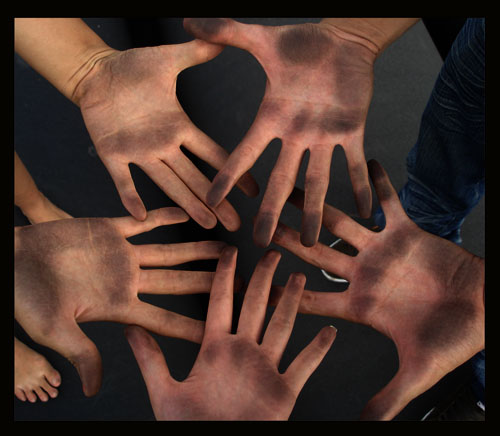Women and men - Whose hands are more bacteria?
Wash your hands and forks, especially if you're a sister. A recent study found that women are more likely to carry bacteria than men in their hands. And moreover, the researchers found more women than they expected.
Biochemical tutor, Rob Knight, of the University of Colorado and co-author of this article, commented: 'A surprising thing is the variety of bacteria among individuals, even lice between the hands of the same person '.
'Just looking at the number of bacteria detected in the hands of the volunteers who participated in the test was astounding, and the number of strains of bacteria was even more diverse in their hands'. Noah Fierer, an assistant professor at the Colorado Department of Ecology and Biological Evolution, said.
The researchers themselves cannot explain why women have more bacteria in their hands than men, but Fierer has suggested that the cause may be due to the acidity of the skin. Meanwhile Knight said that men generally have more acid on their skin than women.
Other possibilities, he added, are due to differences in the oily and sweaty skin glands between men and women, the use of moisturizers or cosmetics often or the thinness of the skin or the ability to produce hormones between the sexes.
Women may have more bacteria living under the skin surface and it is difficult to wash. The question is whether the boys should worry about holding girls' hands? Knight said 'I guess it depends on which girl you hold the hand'.
 Women and men - Whose hands are more bacteria? (Photo: Photobucket.com)
Women and men - Whose hands are more bacteria? (Photo: Photobucket.com)
He stressed that 'most of the bacteria on our bodies are either harmless or beneficial . and few are pathogens'
Researchers took samples from the palms of 51 students . So there are 102 hands all tested by using a sophisticated sophisticated system to detect bacterial DNA.
They identified 4,742 types of all bacteria , only 5 of them appeared on every hand. They reported in the Proceedings of the National Academy of Sciences.
An average hand also has 150 species of bacteria living together. In different individuals, there are fewer and fewer types of bacteria that are on the same hands of the same person, only about 17% of the bacteria.
According to Mr. Fierer, the difference between a small hand and a lot of bacteria is due to environmental conditions such as gland secretion, salinity, humidity or different environmental exposure of each hand.
Knight said that the researchers hope to be able to conduct this test in some other countries, and testing on the hands is still the main purpose.
While researchers always recommend us the importance of frequent hand washing, they also note that hand washing cannot eliminate bacteria completely.
In the report, the researchers wrote: 'These groups of bacteria quickly returned as soon as we washed our hands, or even rubbed our hands (in the manner of SV mentioned in this article). can remove most of the bacteria found on the skin '.
While tests can tell how many bacteria are present, no one can count the total number of bacteria on each hand.
The research was funded by the National Science Foundation and the National Institutes of Health.
- Store information into bacteria: The human USB permanently
- Bactericidal soap is useless because we wash our hands too quickly
- Body parts should not be touched by your hands
- Dead outbreak of people hiding in women's handbags
- Female hands contain a secret that only when holding the hand he discovered
- 95% of people wash their hands the wrong way when going to the toilet
- Experiments show that you are washing your hands extremely 'dirty'
- Artworks painted with bacteria
- Office work is also no less dirty than toilet
- Secret at the hands of gentlemen
- See how fast bacteria spread from the toilet to the human mouth
- Women's hands are colder than men's hands
 'Fine laughs' - Scary and painful torture in ancient times
'Fine laughs' - Scary and painful torture in ancient times The sequence of numbers 142857 of the Egyptian pyramids is known as the strangest number in the world - Why?
The sequence of numbers 142857 of the Egyptian pyramids is known as the strangest number in the world - Why? History of the iron
History of the iron What is alum?
What is alum?